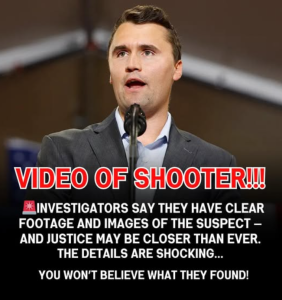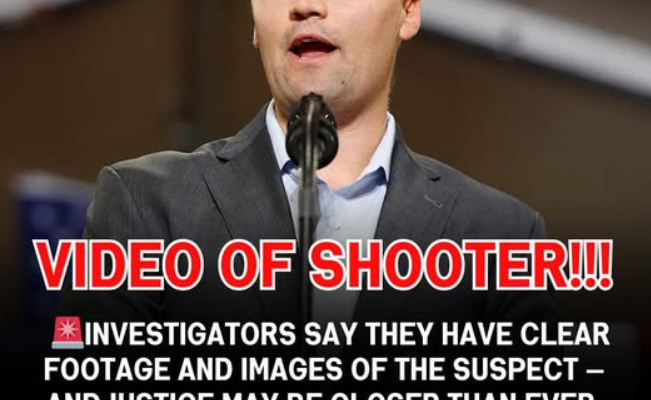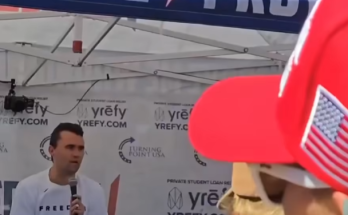The Rooftop Shot: Unraveling the Charlie Kirk Assassination
On a crisp Wednesday morning at Utah Valley University, the campus was abuzz with anticipation. Students gathered for a Turning Point USA event featuring Charlie Kirk, the conservative influencer known for his fiery rhetoric and youth outreach. By noon, the mood had shifted from excitement to horror. A single, precise gunshot rang out—ending Kirk’s life and launching a nationwide manhunt.
Now, the FBI and Utah Department of Public Safety have revealed chilling new details that deepen the mystery and raise urgent questions about motive, identity, and vulnerability.
A Ghost Among Students
According to Beau Mason of the Utah Department of Public Safety, the assassin arrived on campus at 11:52 a.m., blending seamlessly with the student crowd. Described as “college-aged,” the suspect’s ability to pass unnoticed among young attendees suggests a calculated familiarity with campus culture. He wasn’t just hiding in plain sight—he was performing it.
Witnesses recall a figure dressed in neutral tones, carrying a backpack, and moving with purpose. No one suspected that inside that bag was a high-powered bolt-action rifle. Within 30 minutes, the shooter had ascended to the rooftop of a nearby building, positioned himself with surgical precision, and fired a single shot that struck Kirk fatally.
The Weapon and the Message
The choice of weapon—a bolt-action rifle—speaks volumes. It’s not the typical firearm used in mass shootings or impulsive acts. It’s a tool of patience, accuracy, and distance. This wasn’t a chaotic burst of violence. It was a solitary, deliberate act.
Authorities believe the shooter may have scoped the location days in advance, studying sightlines, escape routes, and crowd patterns. The rooftop vantage point offered both concealment and control. It also symbolized detachment—a killer above the fray, watching, waiting, and then vanishing.
A Political Earthquake
Charlie Kirk’s death has sent shockwaves through political circles. As the founder of Turning Point USA, Kirk was a lightning rod for conservative youth activism. His events drew thousands, and his social media presence shaped discourse far beyond college campuses.
To his supporters, Kirk was a warrior for free speech and traditional values. To his critics, he was a provocateur who thrived on polarization. His assassination, regardless of political leanings, is a profound rupture in the American public sphere.
The FBI has not yet confirmed a motive, but speculation is rampant. Was this an act of ideological revenge? A personal vendetta? Or something more cryptic—a statement meant to destabilize, not just silence?
The Hunt Begins
With the suspect still at large, law enforcement is racing against time. Surveillance footage is being analyzed frame by frame. Digital forensics teams are combing through cell tower pings, social media posts, and campus Wi-Fi logs. The “college-aged” descriptor has narrowed the field, but it’s also complicated it—college campuses are transient, diverse, and porous.
Authorities are urging anyone who attended the event or noticed unusual behavior to come forward. A tip line has been established, and anonymous submissions are being prioritized. The killer’s anonymity is his greatest weapon, but it’s also his greatest vulnerability. Someone, somewhere, knows something.
A Campus in Mourning
Utah Valley University has become a shrine of grief. Students have laid flowers at the site of the shooting. Professors have canceled classes. Vigils are being held nightly, with candles flickering against the backdrop of stunned silence.
For many students, Kirk’s presence was more than political—it was personal. He spoke to their frustrations, their aspirations, their fears. His death has left a void that feels both intimate and national.
University officials are working closely with law enforcement to ensure safety and transparency. Mental health counselors have been deployed, and security protocols are being reviewed. The question on everyone’s lips: How did this happen here?
The Psychology of the Killer
Profilers are already sketching the contours of the suspect’s mind. A young adult, capable of blending in, yet harboring lethal intent. The use of a bolt-action rifle suggests discipline and planning. The rooftop location implies strategic thinking. The timing—just before Kirk’s speech—indicates symbolic targeting.
This wasn’t random. It was ritualistic.
Experts warn that the killer may be watching the media coverage, gauging reactions, and possibly planning further actions. The public is being advised to remain vigilant but not paranoid. The line between caution and fear is thin, and the nation is walking it.
Echoes of History
Political assassinations have long haunted the American psyche—from JFK to Martin Luther King Jr., from Robert Kennedy to George Wallace. Each act of violence reshapes the landscape, not just politically but emotionally.
Charlie Kirk’s death joins this grim lineage. It forces a reckoning with the fragility of public discourse, the volatility of ideological divides, and the vulnerability of those who step into the spotlight.
But it also invites reflection. What does it mean to be a public figure in an age of hyper-polarization? What responsibilities do institutions have to protect speakers—and audiences? And how do we mourn without succumbing to cynicism?
The Road Ahead
As the investigation unfolds, the nation watches. The killer’s capture will bring answers, but not closure. The deeper wounds—of division, distrust, and disillusionment—will take longer to heal.
Charlie Kirk’s legacy will be debated for years. But in this moment, his death is a mirror. It reflects our fears, our fractures, and our yearning for meaning.
The rooftop shot was more than a bullet. It was a rupture. And now, we must piece together what remains.


